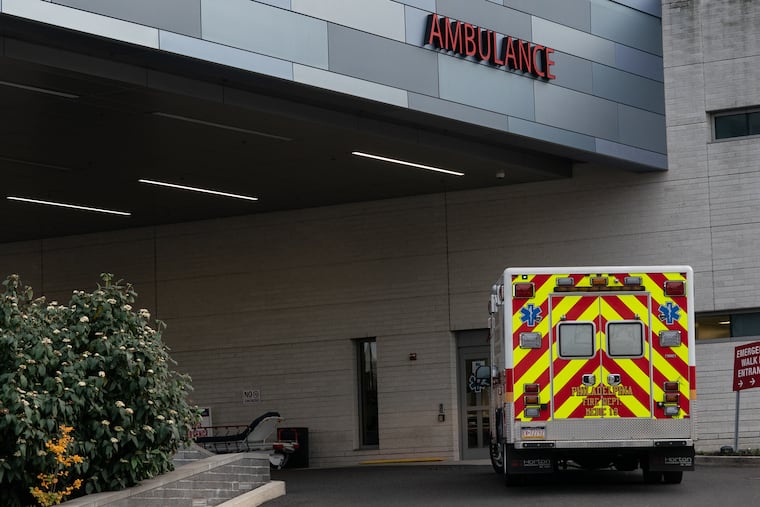EMTs should be able to refuse to take someone to the hospital
Two changes to our emergency medical services system would help.

On a warm spring day in 2019, my crew and I sped through the streets of Hoboken, N.J. Stopping traffic and pedestrians alike with a siren, our ambulance was heading to what the dispatcher told us was a “sick elderly female.” After we entered and walked up three flights of stairs with our medical equipment, we opened the slightly ajar door to find our patient.
“I got a little dizzy when I got up from my chair, so I called 911,” she told us. We always do our due diligence to make sure nothing more serious is afoot.
“Did you lose consciousness?”
“Do you feel your heart racing?”
“Did you fall down?”
After confirming that the answers to all these questions were no and nothing else seemed awry, we asked the most important question: “Do you want to go to the hospital?”
She said yes. We took her, even as I wondered if that was really the best idea.
This, and many situations like it, are circumstances that I have encountered far too many times during my six years working in emergency medical services. Each time, I found myself thinking that it does not have to be this way. Normally, emergency medical technicians are only allowed to informally give patients advice about going to a hospital. However, in situations like these, I wish that I was instead in one of the 14 U.S. cities (according to the most recent data from 2007) that allow EMS providers to decline transporting healthy patients in ambulances.
Allowing emergency medical technicians to decide against transporting certain patients, although rare in the United States, is backed by the National Association of EMS Physicians (NAEMSP). In a 2011 position paper, it stated that “There may be potential for EMS providers to avert unnecessary emergency department visits by providing a medical assessment to determine whether patients can be safely managed without emergency transport to an acute care facility.”
Studies have shown that, from the provider point of view, roughly 30% of ambulance calls are inappropriate. This excess and unnecessary work is one of many factors that has contributed to burnout among ambulance staff. Study after study has shown that call volume and workload are associated with burnout amongst EMS staff. Emergency medical technicians are leaving the field in record numbers, and as a result, many local crews are struggling with staff shortages.
Unnecessary ambulance rides also pose an economic burden. From 2010 to 2019, ambulance-related spending for Medicare beneficiaries averaged $4.6 billion per year, according to an analysis by the financial website ValuePenguin. Saving even a fraction of this spending can have an enormous impact. So why have so few cities been willing to try this practice?
One of the likely reasons is safety concerns. There are a small number of studies on this topic that suggest EMS providers may undertriage some patients — that is, refusing to transport a patient, believing they are stable, when they in fact should be going to the hospital. However, there have not yet been any validated decision-making protocols developed for EMS providers to use to decide whether to transport a patient to the hospital. This is an opportunity for innovation.
Others may rightfully be concerned about how racial biases may play a role in a provider deciding whether a patient should be transported to the hospital. While studies have shown that race and ethnicity may play a role in the destination an ambulance takes a patient to, of the available studies examining EMTs’ ability to determine need for transportation, race has not been cited as a factor. Of course, as this practice becomes more widespread, studies must be funded to evaluate this.
There is also no incentive for EMS agencies to change what they currently do. In many cases, ambulances can only charge a patient if they transport them to a hospital. Based on the current system, they do not mind if the patient is healthy or sick. Simply put, transporting more patients is better for business.
With all of this in mind, what can be done to change our current overworked and costly system such that EMS providers can safely choose not to transport healthy patients to the hospital?
First, an algorithm needs to be created to help EMS providers make this decision based on clinical factors. Data from cities in Ohio, Arizona, and Indiana — where paramedic-initiated non-transport has been used — can help shape this algorithm. In unclear situations, a workflow for telehealth escalation to physicians must be made, which has shown promising results.
Second, we must also change the way we reimburse ambulance providers to incentivize transporting only those patients who need it. Just as hospital reimbursement is trending toward a value-based care system, which rewards providers for doing the “right thing” instead of simply doing “something,” the Centers for Medicare and Medicaid Services must come up with a new metric looking at the “value” or appropriateness of each ambulance ride. Doing so will incentivize ambulance companies and providers to critically examine unnecessary ambulance rides to cut out waste.
With these changes in place, we can drastically improve our overstretched EMS systems, lessen burnout within the field, and take a big step toward decreasing unnecessary health-care spending.
Joshua Ross is a current fourth-year medical and MBA student at NYU Grossman School of Medicine. Prior to attending medical school, he volunteered as an EMT in Hoboken, N.J., for six years. Jr5079@nyu.edu @Joshua___Ross